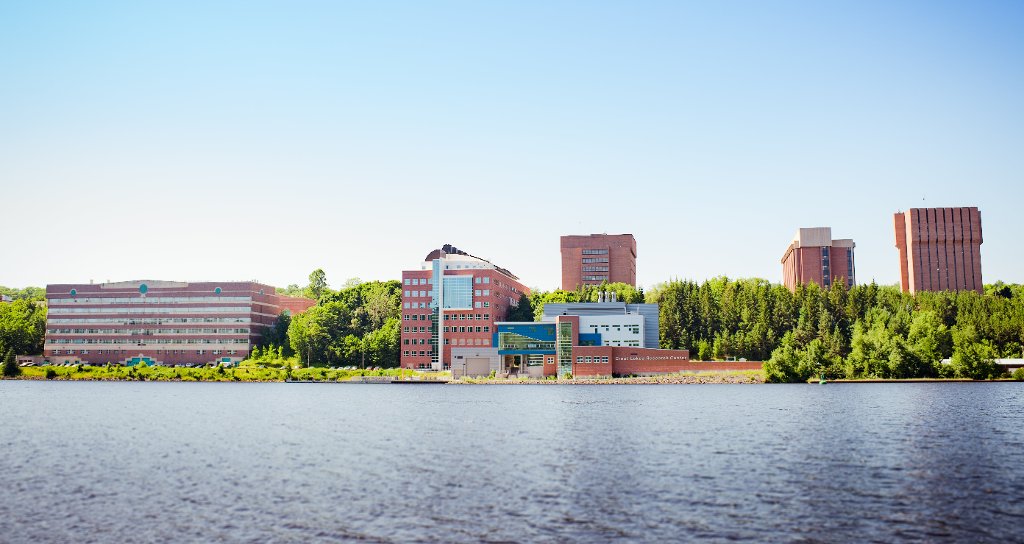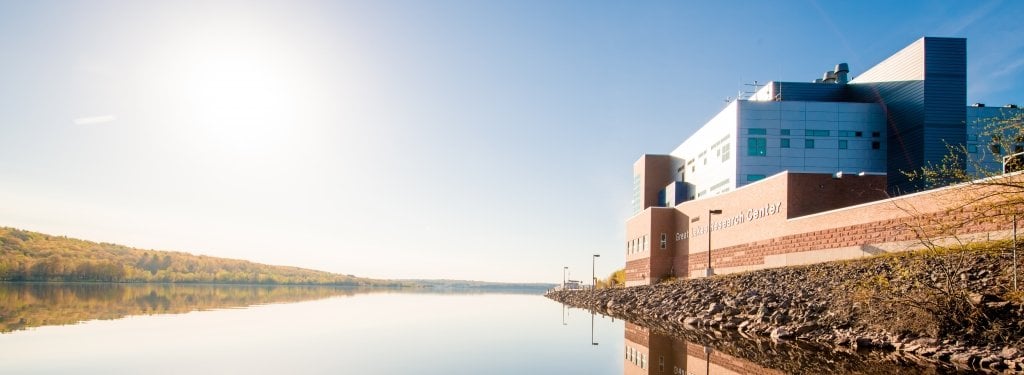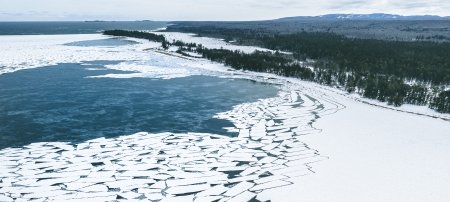At today’s quarterly meeting of the Michigan Pipeline Safety Advisory Board (PSAB), Michigan Technological University’s Guy Meadows provided details on the progress of a team proposal for an independent risk analysis of the Straits pipelines.
Meadows, who is the Robbins Professor of Sustainable Marine Engineering and director of the Great Lakes Research Center at Michigan Tech, outlined for the PSAB the structure of the team that would perform the analysis, as well as a projected timeline for delivering the final report. In his presentation, Meadows outlined a team of 41 researchers from nine universities and other organizations, and estimated that the final risk analysis report could be delivered in August 2018.
Meadows and the team intend to submit their proposal to the State of Michigan within the next few weeks.
“If the State accepts our proposal, we’ll have a matter of months in which to complete our analysis,” Meadows says. “This is an impressive team of experts, and I have no doubt we’re up to the task.”
PSAB Recommendation
On Sept. 18, 2017, the PSAB unanimously recommended that Michigan Tech organize and lead state universities in an independent risk analysis of the Line 5 Straits pipelines, two parallel 20-inch pipelines that form the 4.5-mile section of Line 5 that runs beneath the Straits of Mackinac. In conducting the risk analysis, Michigan Tech, state universities and other collaborators would analyze the environmental and economic impacts of a “worst-case scenario” spill or release.
Enbridge, the multinational energy distributor that owns Line 5, has paid the State for the analysis, but will have no control over the analysis itself. When the final report is issued, the State will require Enbridge to maintain an adequate financial assurance mechanism to cover liability for all damages or losses to public and private property in the event of a worst-case scenario. The State has the authority to do so under the 1953 easement that granted permission for the pipelines’ construction.
“The Pipeline Safety Advisory Board recommended Michigan Tech because the people of Michigan need a data-driven solution,” said Michigan Tech President Glenn Mroz at the time of the PSAB’s recommendation. “That's what scientists and engineers do. We ask questions, gather the evidence and analyze the data to understand the big picture.”
Team and Timeline
In his presentation to the PSAB earlier today, Meadows described a team of 41 researchers—21 from Michigan Tech and 20 from external organizations. Nine universities are contributing to the analysis, and seven of those nine are within the state of Michigan. They include Michigan Tech, the University of Michigan, Michigan State University, Wayne State University, Western Michigan University, Grand Valley State University and Oakland University. The two out-of-state universities are North Dakota State University and Loyola University Chicago.
Three researchers on the project are from consulting organizations, and two are independent contractors. Two other contributors, both from the National Oceanic and Atmospheric Administration (NOAA) Great Lakes Environmental Research Laboratory, will donate their time and services.
Meadows will serve as project lead, with the team organized into nine sections based on the published scope of work. Each section will have a section leader, a chief scientist and at least two section authors. In addition to the nine sections, a “broader impacts” team will provide a comprehensive overview of risks that various affected communities perceive in connection with the Straits pipelines. Affected groups include indigenous communities; local, state, federal and Canadian government officials; environmental and historic preservation groups; and tourism, fishing and recreation industries.
The risk analysis team will use Michigan Tech’s high-performance computing cluster to run high-resolution hydrodynamic models for Lakes Michigan and Huron to predict the fate and transport of worse-case spills. Researchers will also develop a multi-layer, web-based geographic information system GIS portal to accumulate output from each team. This portal will be made available to the State upon completion of the risk analysis to serve as a rapid response resource inventory.
Meadows and the team plan to incorporate feedback from the PSAB and the State’s technical team and submit a final proposal to the State by December 15, with the goal of establishing a contract in early January 2018. Barring any setbacks, the team would complete a draft risk analysis in May 2018 and hold a public presentation on the draft report in early June, followed by a 30-day public comment period. After responding to public and State input on the draft, the team would prepare a final report to be delivered by August 30, 2018.
First Things First
Of course, before the analysis can begin, the State of Michigan needs to accept the team’s proposal and enter into a contract. Meadows expects there will be a short period of negotiation, but is hopeful that the analysis will be underway by mid-January.
“Our goal is to provide unbiased scientific information so that decision-makers are armed to make the best decision possible,” Meadows says. “Michigan Tech is uniquely positioned because of our past research on the Great Lakes and the Straits. We know we need to lead on this, and we have accepted the challenge.”
Michigan Technological University is an R1 public research university founded in 1885 in Houghton, and is home to nearly 7,500 students from more than 60 countries around the world. Consistently ranked among the best universities in the country for return on investment, Michigan's flagship technological university offers more than 120 undergraduate and graduate degree programs in science and technology, engineering, computing, forestry, business, health professions, humanities, mathematics, social sciences, and the arts. The rural campus is situated just miles from Lake Superior in Michigan's Upper Peninsula, offering year-round opportunities for outdoor adventure.






Comments